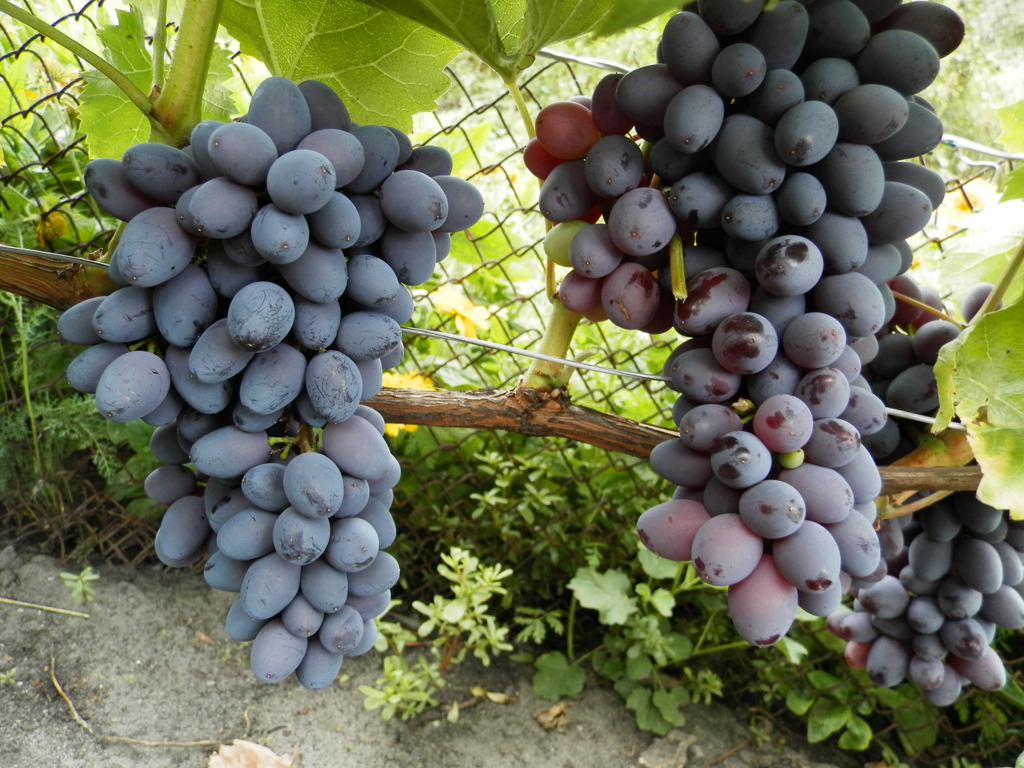
Jupiter grapes were bred in Arkansas (USA) in 1998, a couple of years later he was brought to Russia. There are no exact data on parent varieties. After some trials in different regions of our country, Jupiter took one of the first places in the ranking of the best seedless cultivars.
The variety is actively grown in summer cottages and on an industrial scale.
Content
Characteristics of Jupiter grapes
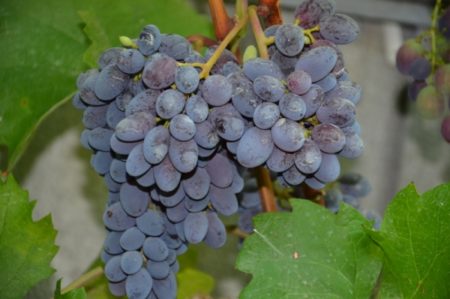
The berries ripen early, from the appearance of the buds to the cutting of the brushes, 105-110 days pass, in warm regions harvesting is carried out in early August, and in cool regions until mid-September. The hybrid begins to bear fruit at the age of 3 years. Winter hardiness is high, the bush withstands frost without loss up to 27 degrees, but only subject to good snow cover. Jupiter is little susceptible to attack by wasps, and also has an average immunity to diseases (oidium, mildew and gray rot).
Description of the bush and berries
Bushes that grow on their own roots are medium-sized, give a small increase in one season, in the case when Jupiter grows on a stock, the bush develops faster, it is higher. The vine is reddish brown or light brown, the leaves are large, dark green, three-lobed, slightly dissected. On one shoot, up to 6 inflorescences are formed, the flowers are bisexual, the variety bears fruit without pollinators.
The clusters are winged, cone-shaped, moderately dense, medium-sized, on average 200 to 300 grams, individual brushes can weigh up to 500 grams. The berries are about 5-7 grams, ovate-oblong with a pointed nose, in technical ripeness are red, and when fully ripe, they are blue-red with a thick matte coating.
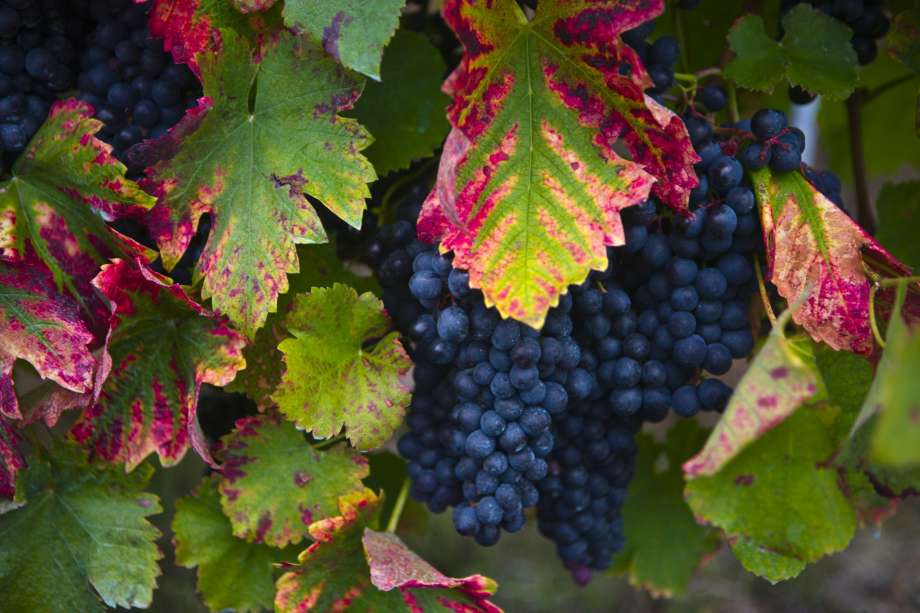
Grapes Northern shoulder coat: characteristics and description, planting and care
Northern shoulder mushroom is one of the oldest grape varieties, used mainly for making wine ...
The pulp is juicy, fleshy, the consistency resembles marmalade, the skin is thin, strong. There are no seeds, sometimes there are small rudiments. The taste is very good, a kind of "isabelic" or duchessly muscat, the aroma is light, unobtrusive. Jupiter grape juice contains up to 21% sugars, very little acid (4-6 grams).
Yield Indicators, Use
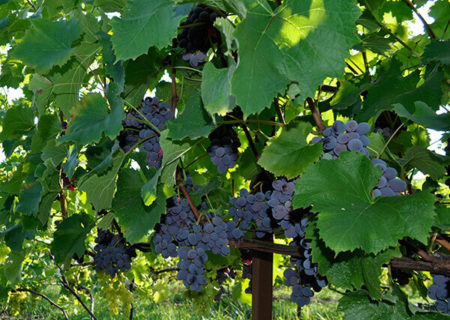
Productivity is high, indicators depend on the method of trimming. In industrial vineyards, 200-250 centners are harvested annually from a hectare of land. Berries for a long time retain an attractive appearance, do not crack during transportation and on the bushes (when waterlogged or from over-ripening). Universal use: various kinds of processing, wine making, drying and freezing.
Advantages and disadvantages
Among the minuses, the relatively low resistance of Jupiter to fungi, as well as the low weight of clusters, are especially notable. However, the bush easily tolerates a load of up to 45 eyes, the hands mature completely, normalization is not required, so the yield of the hybrid always remains high. Let's move on to the positive qualities:
- lack of seeds;
- high yield;
- good taste and presentation of berries;
- universality in use;
- good ripening of shoots;
- the berries stay in the hands for a long time, crumble only when overripe, do not crack during transport and in high humidity;
- frost resistance;
- early entry into the fruiting stage;
- early ripe hybrid;
- vines that are slightly or moderate affected by frost have the ability to recover in a short time;
- the harvest is well stored in a cool room for up to 3 months;
- simplicity in cultivation.
Another important plus is that the cuttings of Jupiter take root very quickly, even a novice can cope with reproduction in this way. However, the branch should be taken only from an adult, fruiting bush (older than 4 or even 5 years).
Growing Features
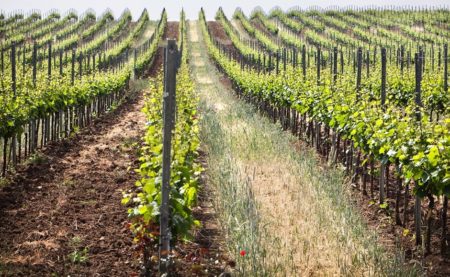
Jupiter grapes should be planted in a sunny, warm place without strong winds and cold drafts. The best option is the south, southwest side of houses or other buildings. The variety is not planted in areas with a high level of groundwater. Own bushes can be let in along the fence, arched structures are constructed for grafted plants.
Planting rooted cuttings can be carried out from spring, when return frosts pass and until the first autumn frosts (under cover). The grafts are grafted to the stock when grapes are at rest. When planting several seedlings, they are placed at a distance of 3 meters from each other.
Watering, feeding and pruning
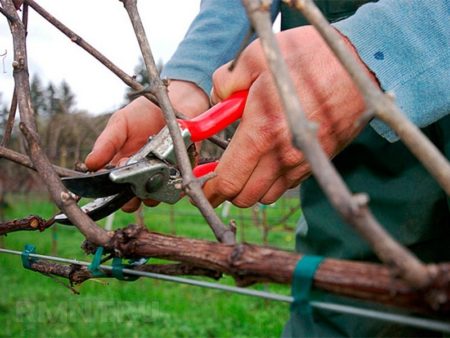
With proper preparation of the planting pit (with fertilizer), top dressing will be required only after the bush has entered the fruiting stage. The first procedure is carried out in the spring, the second immediately after flowering, and the third before wintering. Organic (liquid) and mineral complexes are suitable, all fertilizers are used in moderation. In the spring, it is advisable to bring wood ash into the ground, under a shallow digging (500 grams per square meter).
Watering, provided there is no natural rainfall, is carried out during flowering, and when the berries reach the size of peas, at least 3 buckets of water are used under the bush. Additional hydration is necessary during prolonged dry periods. After each irrigation or rain, the soil in the trunk circles is loosened. It is undesirable to leave the ground bare so that moisture does not evaporate quickly, a layer of mulch is poured around the trunks (up to 3 cm), you can use rotted sawdust, humus or moss.
It is desirable to form a bush in the form of a two-shouldered horizontal cordon; you cannot leave more than 45 shoots. The main pruning is carried out in the fall after leaf fall. Each young vine is shortened by at least 7 or 9 eyes. In the spring, before buds swell, you need to remove all non-overwintered branches, if you wish, you can rejuvenate the bush, cut off excess or too long vines, remove those that grow inward and greatly thicken the crown.
Preventative treatments
Regardless of the growing conditions, Jupiter grapes require protection from fungi and various pests. Preventive spraying should be carried out 4 times a year:
- before budding;
- 2 weeks before flowering;
- immediately after flowering;
- after leaf fall.
For the first three treatments, winegrowers most often take 3% Bordeaux or Thanos (according to instructions). In autumn, it is better to use iron sulfate. Before wintering, all plant residues are removed from the plot with grapes.
Jupiter refers to racketHowever, it has atypically large berries for such varieties. Another significant advantage of the hybrid is its unpretentiousness.Scientists John Clark and James Moore have created a really good, noteworthy variety of Grapes, which very quickly wins the love of summer residents of Russia, Ukraine, Moldova, Belarus and other countries.
Reviews
Martha
My vineyard is located in the Krasnodar Territory, I have been growing Jupiter for 8 years, she covered it only in the first year. The bushes began to bear fruit already the next season, with 5 bushes collected 6 kilograms of berries. Now the harvest is much higher. Ripening is uneven, on one brush there are pink, red and blue berries, after collection the brush is ripened. I do not treat pests, only for diseases, I take different drugs, I usually use what is at hand.
Kirill
I tried Jupiter grapes from friends, I liked the taste very much, unusual and peculiar. He vaccinated the old vineyard, the bushes are tall, the weight of the largest clusters reaches 800 grams, but the taste is not the same. 4 years ago, he planted a stalk of Jupiter and here it is, that same taste and aroma, but the clusters are small and loose. The yield of the grafted bush is consistently high, root-growing also pleased, in the first year, 4–5 brushes ripened on the vines. I don’t shelter for the winter, I spend 2 times processing - right after the buds opened and before wintering, there were no diseases.

 Non-covering winter-hardy grape varieties for Moscow region
Non-covering winter-hardy grape varieties for Moscow region How to keep the vine in winter
How to keep the vine in winter When can I transfer grapes to another place in the fall
When can I transfer grapes to another place in the fall How to cover and prepare grapes for the winter in the suburbs
How to cover and prepare grapes for the winter in the suburbs